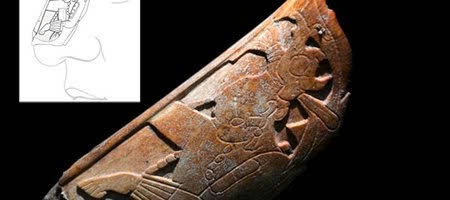An Extraordinary Discovery in the Palenque Archaeological Zone
Archaeologists from the National Institute of Anthropology and History (INAH) have made an intriguing discovery at House C, part of the palace complex established by Pakal the Great in the Archaeological Zone of Palenque, Chiapas. The team uncovered a nose ornament fashioned from a human distal tibia, meticulously engraved with a scene illustrating communication with deities and ancestors.

Importance of the Nose Ornament
This nose ornament is the first of its type ever found in Palenque, symbolizing an accessory worn by rulers and priests during ceremonies where they embodied K’awiil, the Mayan god associated with maize and fertility. The Maya frequently depicted K’awiil in rituals linked to royal inauguration and the promise of “Innumerable Generations.”

The ornament has been dated to the Late Classic period (600 to 850 A.D.) in Mesoamerican history and was discovered within a ritual deposit under a stucco floor. The excavation revealed a pit filled with clay soil, remnants of charcoal, animal bones, obsidian blades, and a human bone nose ring, underscoring the ceremonial importance of the location.
Detailed Description of the Artifact
According to INAH, the earth matrix surrounding the artifact was dark and rich in charcoal, mixed with various remains, including seeds and small mammals. The nose ornament itself is remarkable for its aesthetic value, measuring 6.4 centimeters in length, 5.2 centimeters in width, and 5 centimeters in thickness at its base, tapering toward the top.

The exquisite carving features a profile of a man adorned with bird-shaped headgear, alongside a depiction of a human skull missing its lower jaw. The left arm of the ornament displays the Mayan glyph ak’ab’, which translates to “darkness” or “night.”
Arnoldo González Cruz, director of the Palenque Archaeological Project, remarked that the elongated head shape is typical of the deity K’awiil. This suggests that the ornament was likely worn by rulers and priests during important ceremonies, providing further insight into the cultural practices of the ancient Maya.

